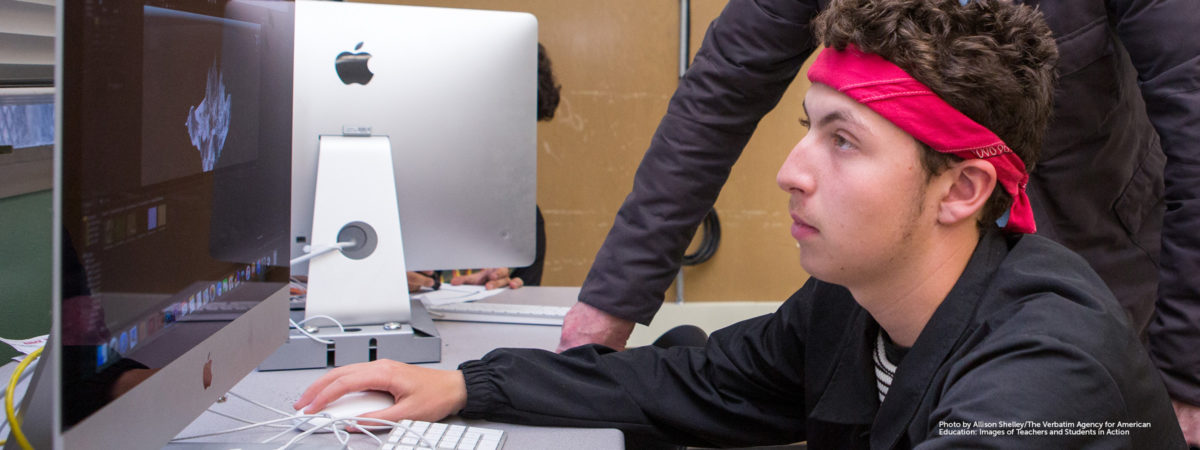
August 18, 2020 | By Vanessa Peters Hinton
In collaboration with Langer Research Associates, Digital Promise developed a survey to reveal the experiences and perceptions of undergraduates taking courses that transitioned to fully online. In addition to surveying more than 1,000 college students, we conducted online interviews with 92 students from 12, two- and four-year institutions.
The most commonly cited challenge among survey respondents was difficulty maintaining motivation. As one student commented, “With the world in chaos, it was hard to stay focused and motivated to mentally show up for class.” Students who described their motivational challenges highlighted a sense of loss of their regular routine, as well as competing priorities and simply feeling far away from their instructors and fellow students.
In interviews, most students said it was more difficult to get help in their course once it was fully online. As one student said, “I think the thing that I struggled most with was just not being able to talk face-to-face with anyone to ask questions.” Students talked about the difficulty of not being able to ask the instructor a question in “real time” or not having “instant access.”
“I think the hardest part for me in this course is not being able to ask the teacher questions directly. Before when we were in class, I could talk to the teacher and ask random questions that came into my head during lecture. Now emailing those questions feels way too formal. I don’t want to waste their time emailing them when they’ve got probably so much more going on with their own stress and everything.” – College Student
While many students missed the opportunity to ask their instructor questions in person, some had instructors who mitigated this problem by holding regular online office hours. Some students actually preferred the online format for getting help and hoped it would continue in the future, even if face-to-face courses resumed.
“I would like it if they could make the online or virtual office hours a permanent thing, regardless of whether they go back to in-person class or not. After COVID we had WebEx sessions you could go to if you wanted to say hello, or if you wanted to talk to someone, or if you have any questions at all regarding the content or the exams or the assessments and so on. Those were really helpful because I really needed to clarify a lot.” – College Student
The majority of students surveyed (65 percent) reported that opportunities to collaborate with peers were worse after their course went fully online. According to some students, the biggest challenge in the course after COVID-19 was “not being able to collaborate with other students,” or “no longer having access to other students in the classroom.”
Students talked about the impact of not being able to collaborate in their interviews. One student missed “having peers to bounce ideas off of or to assess myself before an exam.”
“I think my greatest challenge from when learning went online was the inability to collaborate with my classmates in real time like when we were in class together. It was really helpful having other students right there with you to explain something or correct something if you didn’t understand instead of waiting for a response back for an email. I really missed the ability to have people around me to help keep me motivated and focus on the class.” – College Student
Other students talked about a “disconnect” with the course. “I usually like to learn at least some of my peers’ names and I didn’t learn any of them,” said one student. “I just completely lost contact with all of them. … It was just like me being the only person in the class.”
In addition to revealing challenges with learning remotely from the student’s perspective, the survey, interviews, and focus groups also provided insights into instructional practices associated with higher student satisfaction with the course as taught online. Practices associated with higher levels of student satisfaction with their online course included:
Live online course sessions in which students could ask questions were also associated with more positive ratings of the ability to collaborate with other students.
To learn more about how college students are navigating online learning, check out our full report, “Suddenly Online: A National Survey of Undergraduates During the COVID-19 Pandemic.”
This research was conducted with support from the National Science Foundation (DUE 2029642) and the Bill & Melinda Gates Foundation. The opinions expressed are those of the authors and do not necessarily represent the position, policy, or endorsement of the funding agencies.
By Xin Wei and Dr. Susu Zhang
By Sierra Noakes and AJ Foster